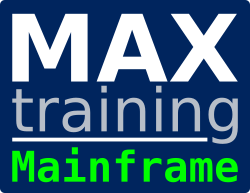DB2 11 for zOS Database Administration Workshop Part 2
Code: CV843GDescription
This course teaches database administrators various features they must be familiar with as DB2 11 for z/OS Database Administrators. These include program preparation, online schema changes, user defined functions, archive-enabled and temporal tables, partition management, stored procedures, and triggers. The course includes many hands-on demonstrations which give the students experience with the included topics. Additionally, there is information on other features in the course appendices, including schemas and user defined data types, clone tables, materialized query tables, large objects, global variables, and row permissions and column masks. This course is a follow-on course to CV832 – IBM DB2 11 for z/OS Database Administration Workshop Part 1. Note: This course is 3 days in length. If the instructor has time, he can cover the optional appendices as desired.
Audience
Database Administrators and System Programmers who would like to get further insight into database administration tasks.
Prerequisites
DB2 11 for z/OS Database Administration Part 1 (CV832) or equivalent experience or knowledge.
Objectives
- Introduce program preparation and the use of packages
- Discuss immediate and pending online schema changes
- Utilize UDFs
- Utilize archive enabled tables
- Utilize temporal tables
- Manage partitions
- Utilize Stored Procedures
- Work with Triggers
Topics
1: Program preparation and the use of packages part 1
• Go through the program preparation steps and execute programs in the DB2 environment using the TSO Attachment Facility
• Resolve some of the most commonly occurring problems, for example SQL error -805
• Understand the importance of collections and packages
• Understand how to access different tables and views at execution time without changing the program
2: Online schema changes part 1
• Discuss immediate, online schema changes
• Change data types and lengths of columns
• Rename indexes
• Add columns to indexes
• Relate implications of renaming a column in a table or renaming an index
• Describe versioning
3: Online schema changes part 2
• Explore pending schema changes
• Materialize pending schema changes
• Drop a column
• Migrate existing classic table space types to UTS
• Change table space characteristics such as DSSIZE, page size, and SEGSIZE
• Take care of the implications of applying those pending online schema changes
4: UDFs
• Differentiate between external scalar functions, external table functions, SQL scalar functions, and sourced functions
• Determine which user-defined function will be invoked given the invocation statement
• Create a user-defined function
5: Archive-enabled tables
• Describe transparent archiving
• Understand archive-enabled and archive tables
6: Temporal tables
• Understand the need for temporal tables
• Utilize System Time temporal tables
• Utilize Business Time temporal tables
• Utilize Bitemporal tables
7: Partition management part 1
• Add partitions
• Rotate partitions
8. Partition management part 2
• Modify limit keys
• Rebalance partitions
9. Stored procedures part 1
• Explain what a stored procedure is
• Describe how to implement and maintain stored procedures
• Discuss types of stored procedures
• Define external stored procedures
• Examine DB2 commands affecting stored procedures
10. Stored procedures part 2
• Examine native SQL stored procedures
• Explain native SQL procedure versioning and deployment
Price (ex. VAT)
Duration
Delivery methods
- Classroom
- On-site (at your location)
- Virtual (instructor online)
